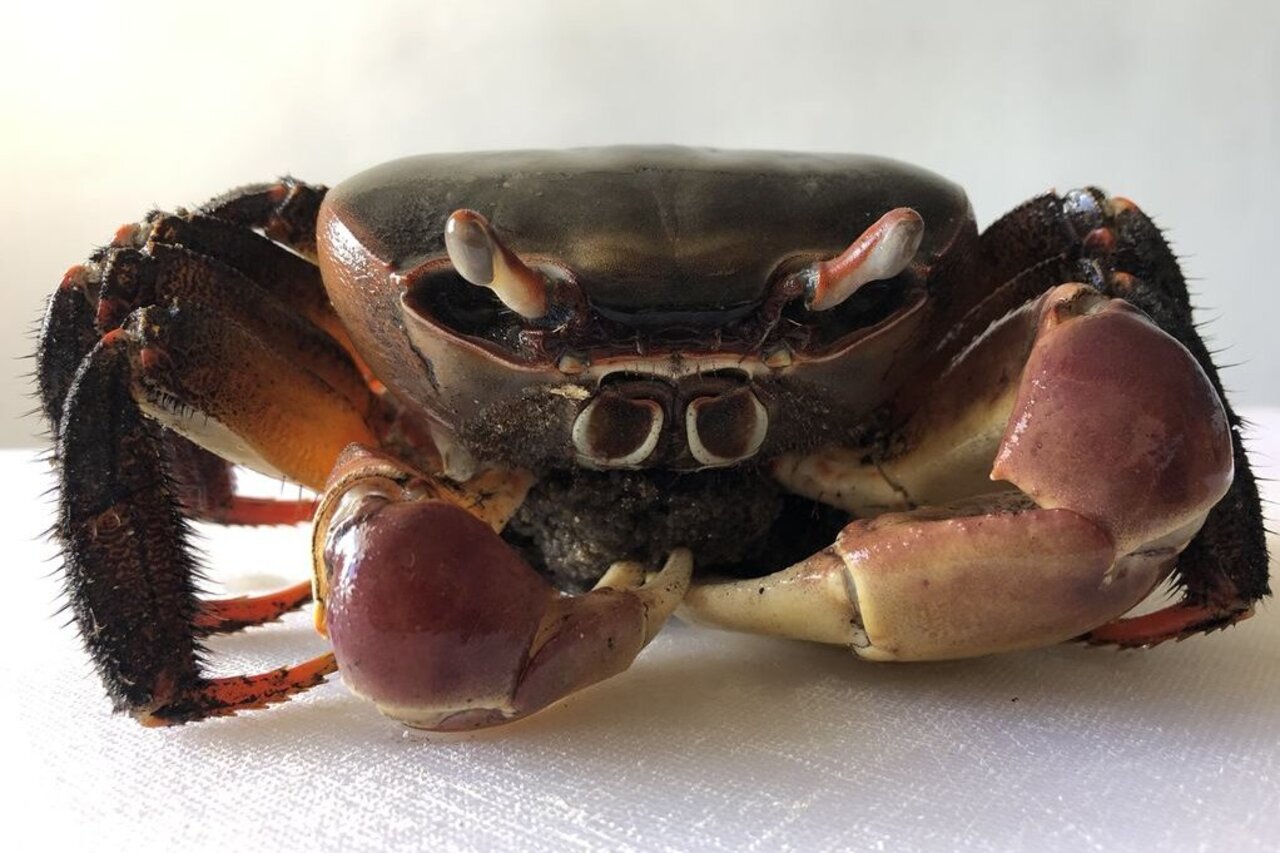Project
Species identification of crustaceans

Development of innovative testing methods as a prerequisite for the production of safe and high-quality crustacean products and resource-saving stock management
With more than 50,000 known species, crustaceans represent an ecologically and economically highly important group. Many species are important for fisheries or are intensively produced in aquaculture. Reliable species identification methods are essential in order to uncover mislabelling in crustaceans and thus to ensure effective consumer protection.
Background and Objective
Crustacean products such as shrimps, prawns, lobsters, crabs or crayfish are traded in large variety around the world and are also extremely popular in Germany. Their total annual production was estimated at 13.8 million tons in 2014, with the share of aquaculture accounting for about 50% in recent years. Despite this considerable share in aquaculture production, wild crustacean stocks still face high fishing pressure. Therefore, the catch of wild shrimp post larvae for rearing in aquaculture, the lack of or inconsistent fisheries management and the illegal, unreported and unregulated fishing of crustaceans significantly contribute to the depletion of stocks not only in southeast Asian regions but also elsewhere, rendering the overfishing of crustaceans a global problem. Global trade with a branched flow of goods can enhance such impacts if traceability and control systems are missing along the entire value chain.
However, effective species identification in crustaceans is hampered by several factors:
- Validated DNA reference sequences are missing for many crustacean species, including those traded on the German market. Unambiguous sequence entries in public databases such as GenBank or BOLD are therefore scarce.
- The analysis time for Sanger sequencing usually takes up to several days, so that raw materials cannot be checked prior to processing and no short-term decisions can be made regarding their market placement.
- An analysis of products made of mixed batches is costly and labour-intensive. This applies in particular to tropical wild-caught shrimps, which are often (inappropriately) labelled by name of the superfamily Penaeoidea or a genus name (e.g. Penaeus).
The project “KrustInUVa” focuses on the development of different DNA and protein-based analysis methods for an unambiguous crustacean species characterization and the identification of potentially allergenic proteins in order to provide trade companies (self-control) and food control authorities (official control) with adequate analytical tools.
Approach
The basic requirement for the generation of DNA sequence reference data and mass spectrometric reference spectra as well as the identification of species-specific peptide markers is the acquisition of authentic reference material. Based on fresh, clearly identified and geolocalized reference samples, fundamental gaps in the feasibility of genetic species differentiation should initially be closed in order to ensure a clear identification of species based on the already existing official Sanger sequencing protocols. The selection of the at least 30 crustacean species to be examined should take into account different aspects (e.g. market relevance, safety risks, scarcity of resources) in close cooperation with the interest groups of the food industry and trade.
DNA-based rapid methods (such as multiplex qPCR) that can be carried out by laboratories with standard lab equipment are to be developed for a fast and inexpensive screening of particularly relevant species. A targeted Next-Generation sequencing method (metabarcoding) is to be established for species identification of mixed products such as mixed wild-caught shrimp.
An undirected, protein-based, mass spectrometric method (MALDI-TOF) will be developed for the rapid identification of a large number of different crustaceans, to enable raw material controls prior to processing and market placement. In addition, directed and undirected proteomic methods (based on LC-MSn) are to be used to identify species-specific peptide markers, with which crustacean species can also be determined in already processed (e.g. cooked) products. The identification of these peptide markers is a prerequisite for the establishment of sensitive and laboratory-independent detection methods for species identification in complex products. The peptide databases determined in the project also serve as the basis for the identification of allergen-specific peptides and therefore the development of sensitive mass spectrometric detection methods for potentially allergenic proteins.
The DNA sequence reference data from crustaceans with reliable information about origin and species identity will be entered into the DNA and image reference database www.aquagene.org, set up by the Thünen Institute and thus made accessible to the public. The provision of secured DNA sequence reference data enables scientists, food control authorities and other stakeholders to clearly assign crustacean products to distinct species in order to detect unauthorized substitutions and thus ensure consumer safety.
Results
The project KrustInUVa aimed to develop different DNA- and protein-based methods for species authentication of crustaceans. A comprehensive collection of crustacean species forms the basis for these research activities. Their valid DNA sequences will be published in public databases. To enable a rapid species identification and high throughput of samples, a multiplex real-time PCR for market-relevant crustacean species and a MALDI-TOF method, extended by a database of crustacean mass spectra, have been established. Two meta-barcoding methods have been successfully used for the examination of crustacean mixtures. LC-MS/MS technologies are common in analytical laboratories and can now be used for species authentication of selected crustaceans with the identified species-specific peptides. For consumer health protection reason, an LC-MS method for the detection of allergen-specific peptides in crustaceans has also been developed.
Results
The project KrustInUVa aimed to develop different DNA- and protein-based methods for species authentication of crustaceans. A comprehensive collection of crustacean species forms the basis for these research activities. Their valid DNA sequences will be published in public databases. To enable a rapid species identification and high throughput of samples, a multiplex real-time PCR for market-relevant crustacean species and a MALDI-TOF method, extended by a database of crustacean mass spectra, have been established. Two meta-barcoding methods have been successfully used for the examination of crustacean mixtures. LC-MS/MS technologies are common in analytical laboratories and can now be used for species authentication of selected crustaceans with the identified species-specific peptides. For consumer health protection reason, an LC-MS method for the detection of allergen-specific peptides in crustaceans has also been developed.
Thünen-Contact

Involved external Thünen-Partners
- Max Rubner-Institut, Bundesforschungsinstitut für Ernährung und Lebensmittel (MRI)
(Karlsruhe, Hamburg, Deutschland)
Funding Body
-
Federal Office for Agriculture and Food (BLE)
(national, öffentlich)
Duration
2.2019 - 6.2022
Publications
- 0
Brenn C, Schröder U, Hanel R, Arbizu PM (2021) A multiplex real-time PCR screening assay for routine species identification of four commercially relevant crustaceans. Food Contr 125:107986, DOI:10.1016/j.foodcont.2021.107986

![[Translate to English:] [Translate to English:]](/media/_processed_/2/9/csm_Embryo-Exp_Gelege_9F_dpf5-200513111619_c8534a8199.jpg)
![[Translate to English:] [Translate to English:]](/media/_processed_/2/9/csm_Embryo-Exp_Gelege_9F_dpf5-200513111619_9027994d44.jpg)
![[Translate to English:] Langbein-Languste (Panulirus longipes) Teilausschnitt der Abbildung einer Langbein-Languste.](/media/institute/fi/Biodiversitaet_und_Wanderfische/KrustInUVa_Panulirus_longipes__Langbein-Languste__Longlegged_spiny_lobster_.jpeg)
![[Translate to English:] Blaue Schmucklanguste (Panulirus versicolor) Großaufnahme einer Blauen Schmucklanguste](/media/_processed_/0/9/csm_KrustInUVa_Panulirus_versicolor__Blaue_Schmucklanguste__Painted_spiny_lobster__3e387e05b9.jpeg)
![[Translate to English:] Froschkrabbe (Ranina ranina) Nahaufnahme einer Froschkrabbe.](/media/_processed_/a/c/csm_KrustInUVa_Ranina_ranina__Froschkrabbe__Spanner_crab__1765cede76.jpeg)





